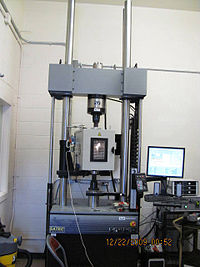
Back علم البناء Arabic Ehitusteadus Estonian دانش ساختمان Persian Scienza delle costruzioni Italian Строительная наука Russian Khoa học xây dựng Vietnamese

Building Science is the science and technology-driven collection of knowledge to provide better indoor environmental quality (IEQ), energy-efficient built environments, and occupant comfort and satisfaction. Building physics, architectural science, and applied physics are terms used for the knowledge domain that overlaps with building science. In building science, the methods used in natural and hard sciences are widely applied, which may include controlled and quasi-experiments, randomized control, physical measurements, remote sensing, and simulations. On the other hand, methods from social and soft sciences, such as case study, interviews & focus group, observational method, surveys, and experience sampling, are also widely used in building science to understand occupant satisfaction, comfort, and experiences by acquiring qualitative data. One of the recent trends in building science is a combination of the two different methods. For instance, it is widely known that occupants' thermal sensation and comfort may vary depending on their sex, age, emotion, experiences, etc. even in the same indoor environment. Despite the advancement in data extraction and collection technology in building science, objective measurements alone can hardly represent occupants' state of mind such as comfort and preference. Therefore, researchers are trying to measure both physical contexts and understand human responses to figure out complex interrelationships.
Building science traditionally includes the study of indoor thermal environment, indoor acoustic environment, indoor light environment, indoor air quality, and building resource use, including energy and building material use.[1] These areas are studied in terms of physical principles, relationship to building occupant health, comfort, and productivity, and how they can be controlled by the building envelope and electrical and mechanical systems.[2] The National Institute of Building Sciences (NIBS) additionally includes the areas of building information modeling, building commissioning, fire protection engineering, seismic design and resilient design within its scope.[3]
One of the applications of building science is to provide predictive capability to optimize the building performance and sustainability of new and existing buildings, understand or prevent building failures, and guide the design of new techniques and technologies.
- ^ V., Szokolay, S. (2014-04-11). Introduction to architectural science: the basis of sustainable design (Third ed.). Abingdon, Oxon. ISBN 9781317918592. OCLC 876592619.
{{cite book}}: CS1 maint: location missing publisher (link) CS1 maint: multiple names: authors list (link) - ^ Norbert, Lechner (2014-09-23). Heating, cooling, lighting: sustainable design methods for architects (Fourth ed.). Hoboken, New Jersey. ISBN 9781118849453. OCLC 867852750.
{{cite book}}: CS1 maint: location missing publisher (link) - ^ "About NIBS | National Institute of Building Sciences". www.nibs.org. Retrieved 2021-08-24.